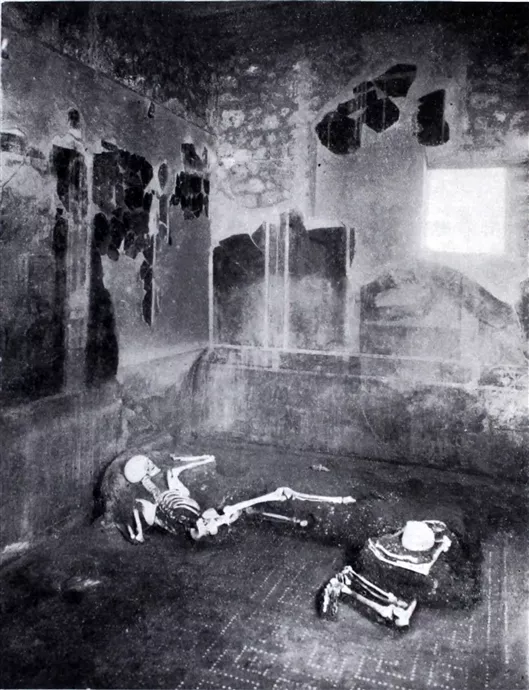Scientists reported for the first time the sequencing results of the human genome of a deceased person in Pompeii, Italy, after the eruption of Mount Vesuvius in AD 79 Previously, researchers had only sequenced short fragments of mitochondrial DNA from Pompeii human and animal remains. Relevant research was published in the scientific report on May 26.

Two men found in Pompeii's "craftsman's house" (room 9). The picture is from the book "Notizie degli scavi di antichita", 1934 edition, page 286, figure 10
Gabriele scorrano of the University of Copenhagen in Denmark, Serena Viva of the University of saranto in Italy and colleagues analyzed the remains of two individuals found in Pompeii's "craftsman's house" and extracted their DNA. According to the shape, structure and length of these bones, one group of remains belongs to a male aged 35 to 40 at the time of death, and the other group belongs to a female aged over 50.
Although the authors were able to extract and sequence the ancient DNA of the two individuals, they could only obtain the complete genome of the male remains, because the sequence of the female remains was blank.
The author compared the DNA of this male individual with that of other 1030 ancient and 471 modern western Eurasian individuals, and found that his DNA was most similar to that of modern central Italians and other individuals living in Italy during the Roman Empire. However, the analysis of the male's mitochondrial DNA and Y chromosome DNA also found common gene groups in individuals in Sardinia, but these gene groups were not found in other individuals living in Italy during the Roman Empire. This indicates that the whole Italian Peninsula may have high genetic diversity during this period.
Further analysis of the bone and DNA of the male individual revealed damage to one of the vertebrae, as well as DNA sequences common to mycobacteria. The genus Mycobacterium includes Mycobacterium tuberculosis, which causes tuberculosis, indicating that the individual may have tuberculosis before death.
The authors speculate that the successful restoration of ancient DNA from the remains of this male individual may be due to the protection provided by the volcanic debris released during the volcanic eruption from the environmental factors that degrade DNA (such as atmospheric oxygen). The author said that the research results proved the possibility of recovering ancient DNA from the remains of Pompeii people, and put forward deeper insights into the genetic history and life of this population.
Relevant paper information: https://doi Org/10.1038/s41598-022-10899-1
Author: Feng lifeI source: China Science Daily